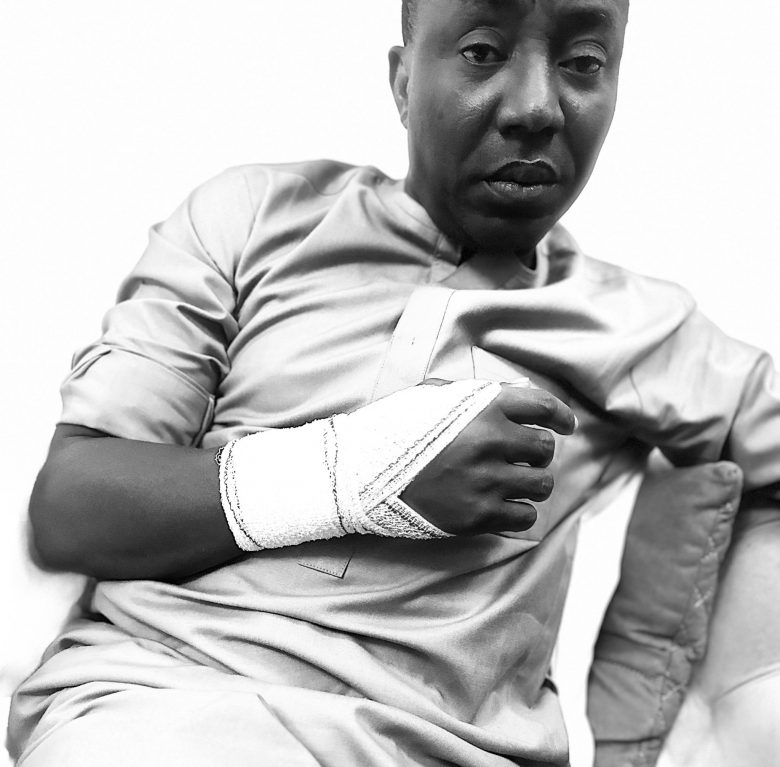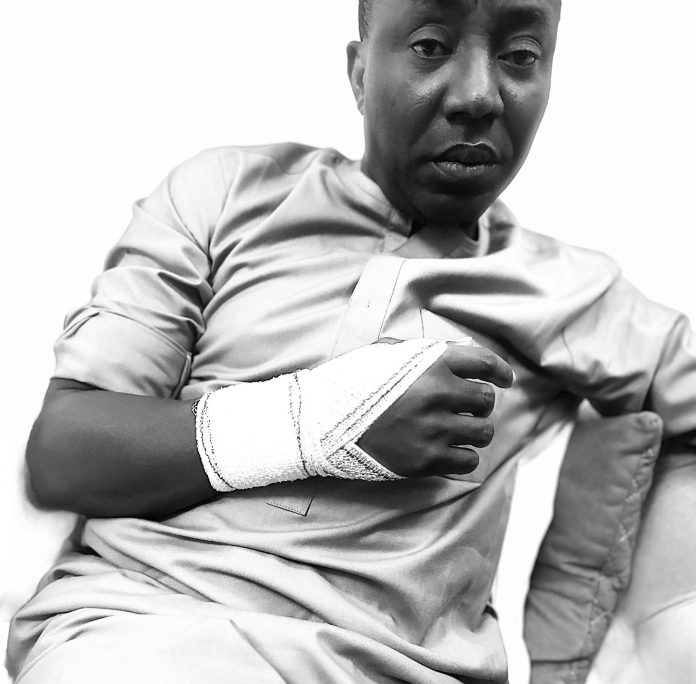By Kelvin Adegbenga
Omoyele Sowore, the self-styled activist and publisher of Sahara Reporters, once again finds himself at the centre of public scrutiny, not for his usual brand of fiery activism, but for what appears to be a poorly executed attempt to manipulate public sympathy through a questionable photo he posted online, supposedly showing a fractured hand.
On closer inspection, the image raises more questions than answers.
First, why is the picture in black and white? In an era of high-resolution smartphone cameras and instant colour photography, it is puzzling that someone supposedly documenting an injury would revert to greyscale.
Was this an attempt to mask inconsistencies or to create a dramatic effect that distracts from the obvious flaws in the image?
Then there’s the strange cropping of the photo. Key visual information is cut out, such as the identity of the person tying the bandage and the full frame of the environment.
A cropped image in this context seems suspicious, an effort to control the narrative by showing only what supports the claim while conveniently hiding what doesn’t.

The most glaring anomaly, however, is the proportion of the hand in the picture. It appears disproportionately large, almost cartoonish, when compared to the rest of the visible body.
Is this an optical illusion? Or the result of a rushed Photoshop job where the editor enlarged the hand for dramatic effect but forgot to maintain anatomical accuracy?
And then comes the critical question: who tied the bandage on the alleged injury? A medical professional? A supporter? Sowore himself?
The bandaging appears haphazard and lacks the structure typically seen in hospital or clinic treatment. If the injury were as severe as a fracture, wouldn’t there be a cast, a sling, a medical report, or even a hospital backdrop?
Sowore’s history of sensationalism and performative activism gives reason for scepticism.
This is not the first time he’s resorted to dramatics to fuel a narrative of state victimhood, often blurring the line between genuine protest and calculated propaganda. But this time, he may have overplayed his hand, literally.
Public trust is built on truth and transparency, especially from those who claim to speak truth to power. Manipulating visuals to incite outrage undermines not just Sowore’s credibility, but the very movements he claims to represent.
If indeed the injury was real, why resort to a doctored photo to prove it? And if it was fake, as increasingly seems to be the case, then Nigerians deserve an apology, not just for the lie, but for the insult to genuine victims of state violence whose real suffering is often ignored because of such publicity stunts.
In a democratic society, the right to protest is sacred, but so is the truth. Let us not sacrifice one in pursuit of the other.
Kelvin Adegbenga is a public affairs analyst and writes from Abuja. kelvinadegbenga@yahoo.com


